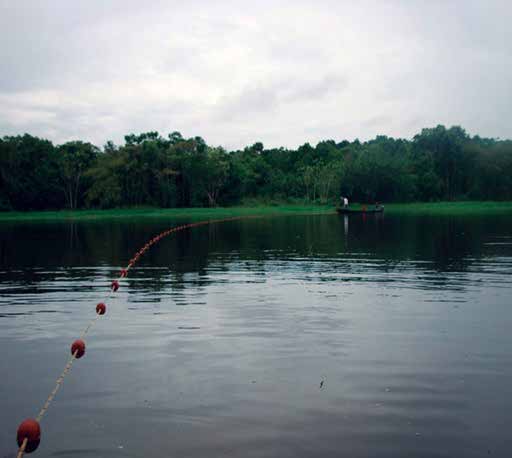Distribution and abundance of knifefish in the Manamo stream, Delta Amacuro state, Venezuela
Abstract
The Orinoco River has a basin of 990,000 km² and its delta is made up of a complex group of freshwater, estuarine, and marine ecosystems. The great biodiversity of this river places it as one of the richest freshwater systems in the world. The Orinoco basin is home to between 850 and 1,000 known fish species, which represents almost 10% of the world's freshwater ichthyofauna (Lasso et al., 2004).
In particular, the knifefish of the order Gymnotiformes, are present in this ichthyofauna, they are neotropical (of tropical and subtropical humid forest), characterized by the electrogenic capacity of their body (produce electricity) and electroreceptor (receive information through electrical impulses) . The simplest characteristics that allow them to be recognized are: elongated and compressed or cylindrical body and absence of dorsal, pelvic and caudal fins (tail fin), except in species of the Apteronotidae family. In general, these fish are nocturnal and twilight, living associated with the bottom of water bodies or hidden in logs and submerged vegetation. Generally, they do not form schools and their diet is based on aquatic insects, plankton and some species feed on other fish and small crustaceans (Mago-Leccia, 1994).
Species belonging to this order are not important in commercial fisheries, although some of them can be used as ornamental fish. However, they are part of the structure of the fish trophic chains of the rivers that make up the Orinoquia (the Apure and Orinoco rivers); where they show the great quantity and diversity of fish of this family that inhabit both the bottom of the lotic systems (stopped waters), as well as the lentic aquatic groups (moving waters) of the Orinoquia (Marrero and Taphorn, 1991).
In this sense, and taking as a reason the increasingly accelerated loss of spaces of great diversity at the global and national level, due to expansionist anthropogenic development movements, which produce barriers and losses to biodiversity, the realization of this ecological study is proposed, in order to know the area of distribution, inventory and abundance of the species of knifefish of the order Gymnotiformes present in the Manamo stream and its lagoon systems in the Orinoco river delta.
References
Lasso, C., P. Sánchez-Duarte, O., Lasso-Alcalá, J., Hernández-Acevedo, R. Martín, H. Samudio, K. González, y L. Mesa, 2009. Lista actualizada de los peces del río Orinoco, Venezuela. Biota Colombiana .10: 23-148.
Lasso, C.y P. Sánchez-Duarte, ,2011. Los peces del delta del Orinoco, diversidad, biología, uso y conservación 71-416 Pp..
Mago-Leccia, F. 1994. Electric fishes of the continental waters of America. Classification and catalogue of the electric fishes of the order Gymnotiformes (Teleostei: Ostariophysi), with descriptions of new genera and species. FUDECI. Biblioteca de la Academia de Ciencias Físicas, Matemáticas y Naturales, Clemente Editores, C-A., Valencia, Venezuela. XXIX: 206 p.
Marrero, C. y D. Taphorn, 1991. Nota sobre la historia natural y la distribución de los peces Gymnotiformes en la cuenca del río Apure y otros ríos de la Orinoquia. Biollania 8: 123- 142.
Taphorn, D. D. R, Numa H y A. Barbarino. 2004 Los peces y las pesquerías en el Parque Nacional Aguaro-Guariquito, Estado Guárico, Venezuela, Memorias de la fundación la Salle de ciencias Naturales 2005 (“2004”),161-162-19-40.


